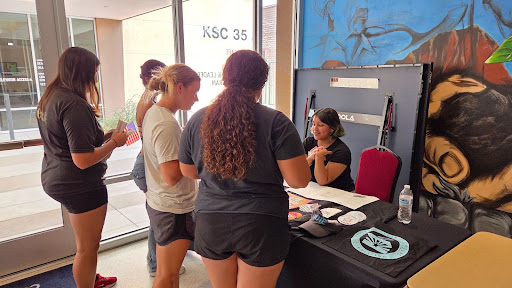Psychologists investigate role of celebrities
Jessie Pullen
Mesa Legend
Celebrities are in the limelight, circulating their names, trends, and life stories everywhere the public eye touches. Many individuals see a celebrity’s flawless complexion, adventurous spirit, hip language, captivating style and begin to integrate it into their own. For Maverick Graham, a student at MCC, Steve Irwin inspired him on much deeper levels than superficial style or popular language. “Steve Irwin was a big one for me because that’s my life in a nut shell. Animals and kids and teaching kids about animals” Graham said. Steve Irwin’s legacy is being lived out through Maverick’s motivation and desires to be involved with people and animals. Maverick is even majoring in education to advance into the career he desires.
Inspiration, where it comes from and how it is experienced, is still being uncovered by scientists and researchers. So far they have uncovered that when someone experiences a bout of inspiration, such as an “Eureka!” moment, it takes place in the right temporal lobe or the anterior superior temporal gyrus to be exact. According to Dr. Scott Barry Kaufman, the scientific Director of The Imagination Institute in the Positive Psychology Center at the University of Pennsylvania, exercising, reading, meditating, and playing video games have all been linked to higher temporal lobe activation and more brain activity in general that can stimulate more extensive thought processes.
This is critical for people who may need more inspiration or motivation in their lives. “Inspiration is evoked spontaneously and without intention by something– whether it’s an idea that comes from within, an inspiring person such as a role model, or a divine revelation,” Kauffman said in his Psychology Today article. “Another key quality of inspiration is that it is transcendent of our more animalistic and self-serving concerns and limitations.” Basically inspiration reaches those who are open minded and willing to fight against the odds to obtain what they desire.
Maverick is definitely one of many who exuberates such enthusiasm.
He explained a dream of his to start a show at the Phoenix Zoo that would incorporate employing special needs adults to be animal handlers. They would be able to have jobs and demonstrate the gentleness of the creatures that people may not know a whole lot about. This is an example of what inspiration does when it is stimulating the brain for a long while.
Mia Palmer, a psychology professor at MCC with a Masters in psychology mentioned the impotance of role models.“Someone who is interested in (the same things their role model) is gonna be more apt to follow his lead,” Palmer said. “When we see certain attributes in somebody else that are similar to ours, we ask ourselves what did they do to get where they are and how can we get there, too? And then we start emulating a lot of the activities that (our role model) did. Like not giving up and following where they got started.”
What people find inspiring and model themselves after depends on the environment the person grew up in and their internal temperament and personality types. “There are personality types who are, I guess the word is humble, enough to emulate the way others have done things, and other personality types that are more competitive and believe that they can do everything on their own,” Palmer continued. “It depends on the environment they are raised in and the parents.”
For Maverick, having grown up with animals and even having a tiger in his backyard as a child have attributed to his appreciation of animals around him. “Steve Irwin demonstrated how to be caring to everybody. He cared about everybody and everything. And every animal was just as awesome. Regardless of what it was, whether it was this tiny insect or this massive 20 foot long crocodile,” Maverick said. “It was just as interesting as the last one. You just got to find the cool in everything,” he said.









